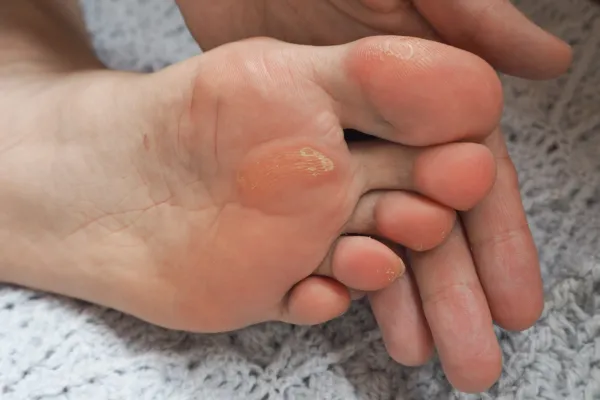
How to Tell If That Callus Might Actually Be a Pressure Sore
You Might Think It’s Just a Callus—But It Could Be Something More Serious
Let’s talk about something most people overlook: that thick patch of skin on your foot. Looks like a callus, feels like a callus... but what if it’s not?
If you’ve got diabetes, poor circulation, or you’ve had trouble with foot wounds in the past, this is for you.
Because what you think is just a harmless bump might actually be the start of a pressure sore—and those can turn into big problems fast.
Callus vs. Pressure Sore: What’s the Difference?
Calluses form from repeated pressure or rubbing. They're your body’s way of protecting your skin. If you wear tight shoes or walk a lot, a callus is your body saying, “Hey, that spot’s taking a beating.”
But here’s the catch…
A pressure sore (also called a pressure ulcer) can start under that same callus. Especially if:
You can’t feel pain well (common in diabetic neuropathy)
Your blood flow is poor
You’re on your feet a lot without good support
And once a pressure sore forms, it can break down the skin and tissue underneath—even if the surface looks okay.
5 Signs Your Callus Might Actually Be a Pressure Sore
It’s starting to hurt or feel tender
Even if the skin feels thick, soreness underneath can be a red flag.There’s drainage or moisture
Any clear fluid, blood, or yellowish gunk? That’s a sign it’s not just dry skin.It feels warm or looks red around the edges
Warmth, redness, or swelling could mean inflammation or infection is starting.It keeps coming back in the same spot
Recurring pressure in one area means your shoes, walking pattern, or foot shape might be the problem.You have diabetes or neuropathy and can’t feel it at all
No pain? Doesn’t always mean no problem. You might not feel the damage starting underneath.
Why Pressure Sores Are a Big Deal
If caught early, pressure sores can be treated easily. But if they go deep, they can:
Get infected
Turn into open wounds
Lead to serious complications (including hospitalization or worse)
We’re not trying to scare you—just give you a heads-up. At American Surgeons Group, we’ve seen too many small issues turn into big ones because people waited too long to get help.
What You Can Do Today
Here’s how to protect your feet and catch issues early:
✅ Check your feet daily.
Look for color changes, moisture, or unusual spots.
✅ Wear shoes that fit well.
Avoid tight or hard shoes. Cushion is your friend.
✅ Use a pumice stone carefully—never cut a callus.
If you’ve got circulation problems or diabetes, see a pro.
✅ Get a podiatric check-up.
If you’re unsure, we’re here to help. A quick look from our team could save you weeks of pain later.
When to Call Us
If you’re worried your callus might be more than just thick skin—or you’re seeing any of the red flags above—don’t wait. Let’s take a look, treat it early, and keep you walking comfortably.
Your feet carry you every day. Let’s make sure they’re in good shape.
